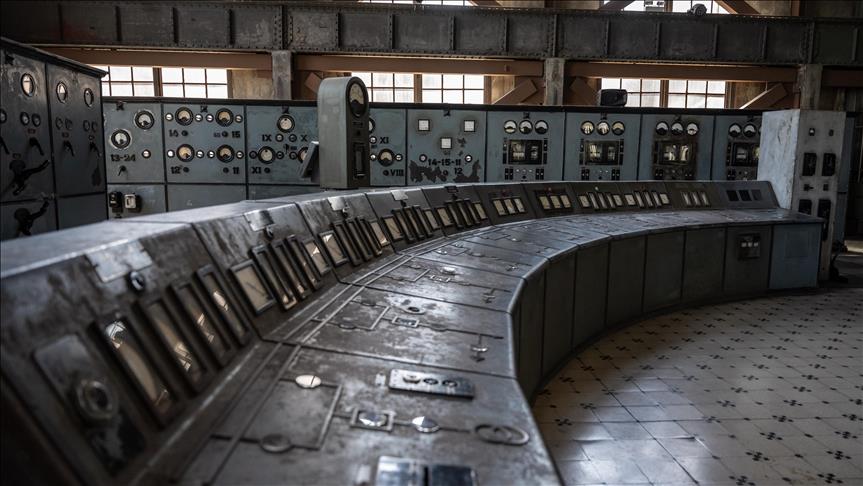Türkiye’s first urban-scale power plant, Silahtaraga, now a museum, traces Türkiye’s history of electrical generation since its foundation in 1913.
Located on the banks of Istanbul’s Golden Horn, the city’s oldest industrial zone, the Silahtaraga power plant was founded with the concept of a city-oriented electricity distribution, Amed Gokcen, an archive manager at Istanbul Bilgi University, told Anadolu during an interview at the historic plant, which has served as an energy museum since 2007.
The plant has provided electricity to Istanbul since 1914, but several renovations and upgrades now see its architecture reflecting the 1950s with high ceilings and large windows.
‘Constructed by the German company Ganz, the plant’s management was later transferred to Sofina, a French firm now operates in Belgium, which oversaw its operations until 1938,’ according to Gokcen. The power plant was subsequently nationalized.
With the passage of time and as Istanbul expanded, the plant grew in tandem, both in structure and newer technology, to cater for burgeoning demand.
It has retained the historic control room where electricity distribution in Istanbul was controlled and directed at that time in what was the city’s only electricity generation center up until 1952.
Gokcen explained that after 1952, the plant expanded its operations to become an electricity distribution center for the surrounding area.
Fueled by coal hauled from Zonguldak, Türkiye’s Black Sea mining heartland, Silahtaraga kept the lights on in Istanbul until 1983.
However, production at the power plant stopped in 1983, following 70 years of operation.
– Museum conversion
In the 2000s, a comprehensive upgrade project was carried out at the power plant, transforming it into the Energy Museum by preserving the engine rooms and relaunching it as ‘Türkiye’s first industrial archeology museum.’
Gokcen explained that after serving as a factory until 1983, the site became an electricity corporation warehouse for a while. Then, in 2004, thanks to a protocol between the Turkish Energy and Natural Resources Ministry and Istanbul Bilgi University, the property was transformed into a university campus that houses the Energy Museum today.
One of the first tasks for the museum was to save six turbines and prevent rust from destroying the power plant’s machinery.
The museum website disclosed that teams of experts moved in to clean up and apply a protective anti-corrosion sealant to the machinery.
“The number one turbine generator group was restored to its original appearance in 1931. Meanwhile, the number-three turbine generator group, which had been dismantled when production stopped at the plant, was preserved exactly as it was left,” it read.
Currently, the Energy Museum has content where university students, high school students, or primary school students from many parts of Türkiye can come in groups and benefit from small workshops on energy production and its importance.
The museum also boasts an archive on the history of the power plant, with details on the ordinary lives of Istanbulites at the time the factory was fully functioning.
– Silahtaraga: important technological venue at heart of Istanbul
When categorizing the archive, one theory became clear: Istanbul and electricity are inextricably linked, Gokcen said.
He explained that electricity was not just a source of power but a catalyst for transformation.
“From powering transportation and security systems to illuminating streets and fostering commerce, electricity fundamentally reshaped neighborhoods into the vibrant districts we know today,” he said.
“Silahtaraga stands as an important technological venue, almost at the heart of Istanbul’s centuries-old history,” he concluded.

